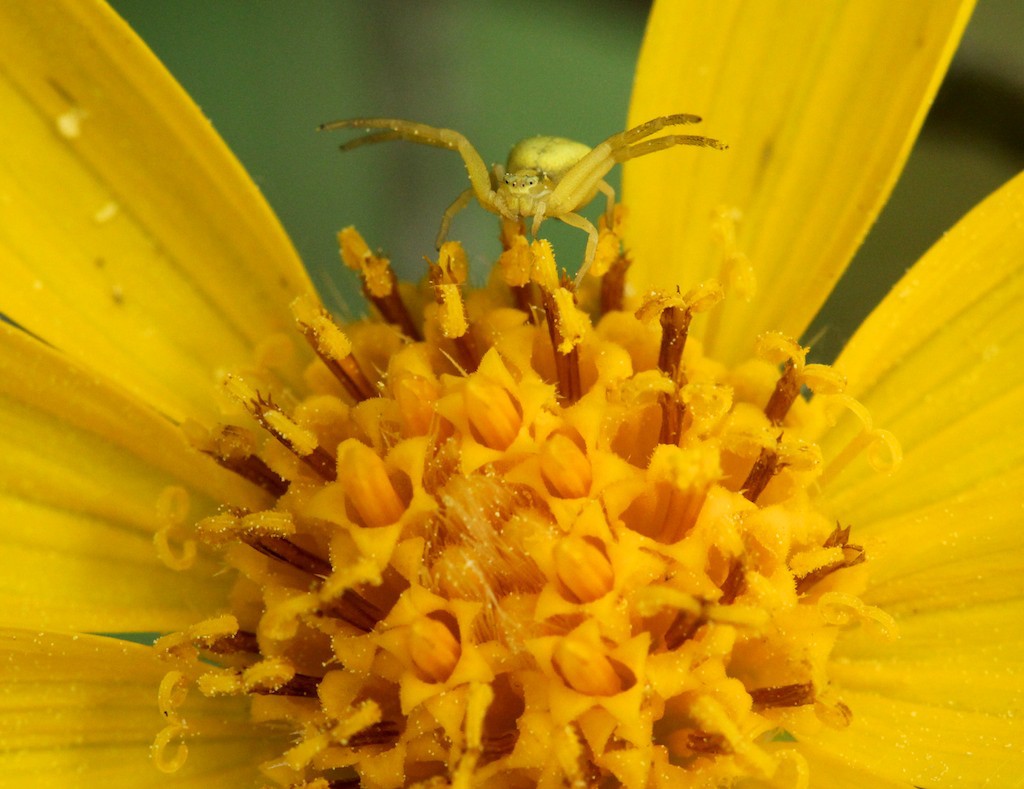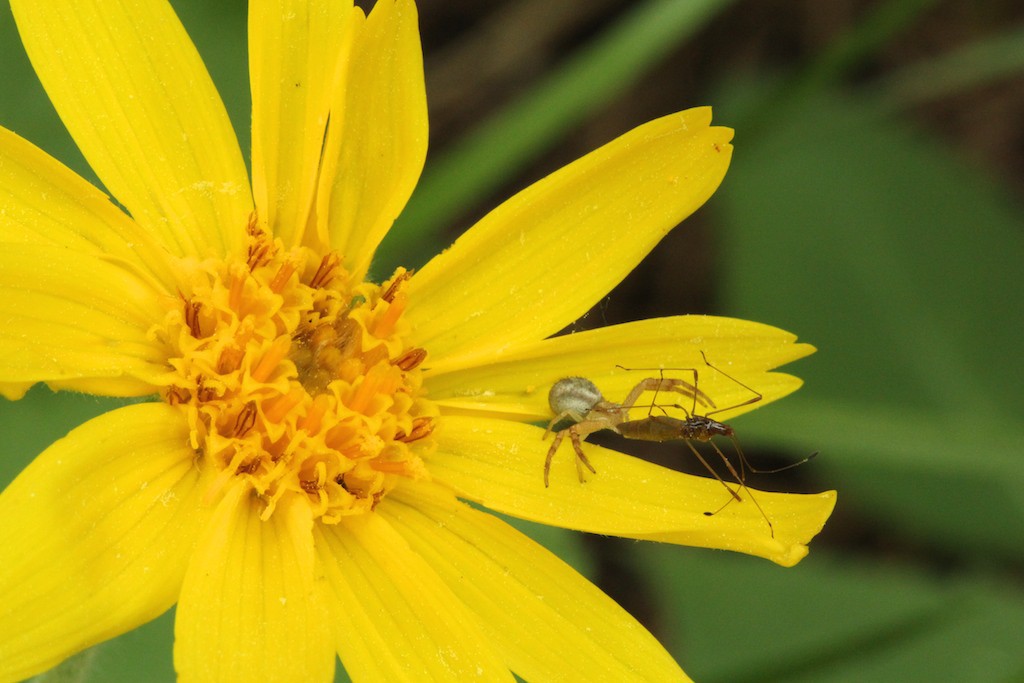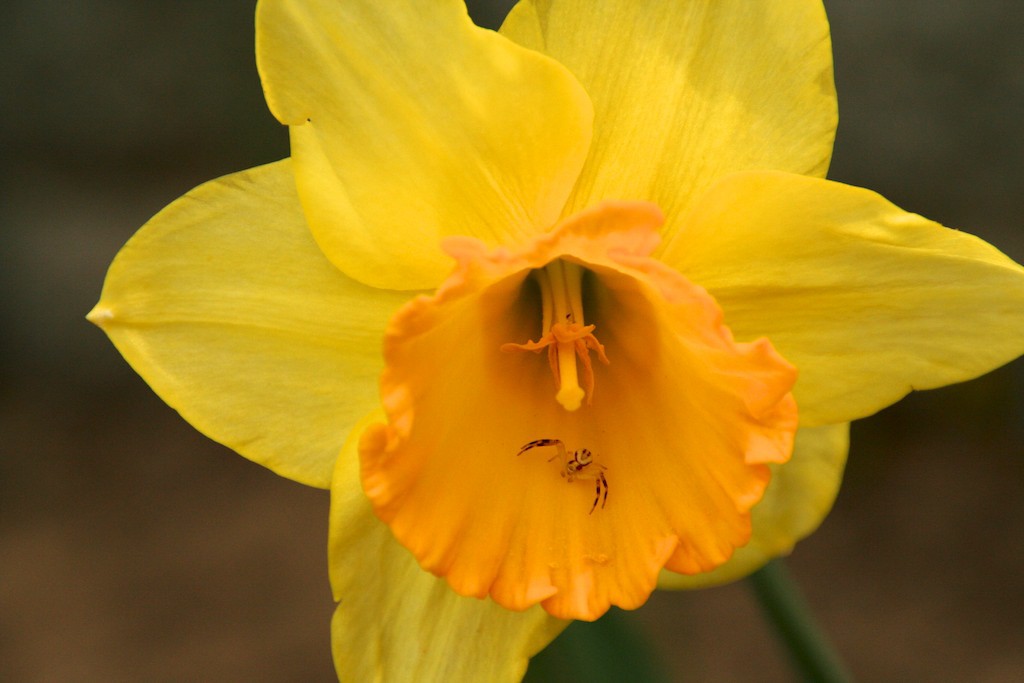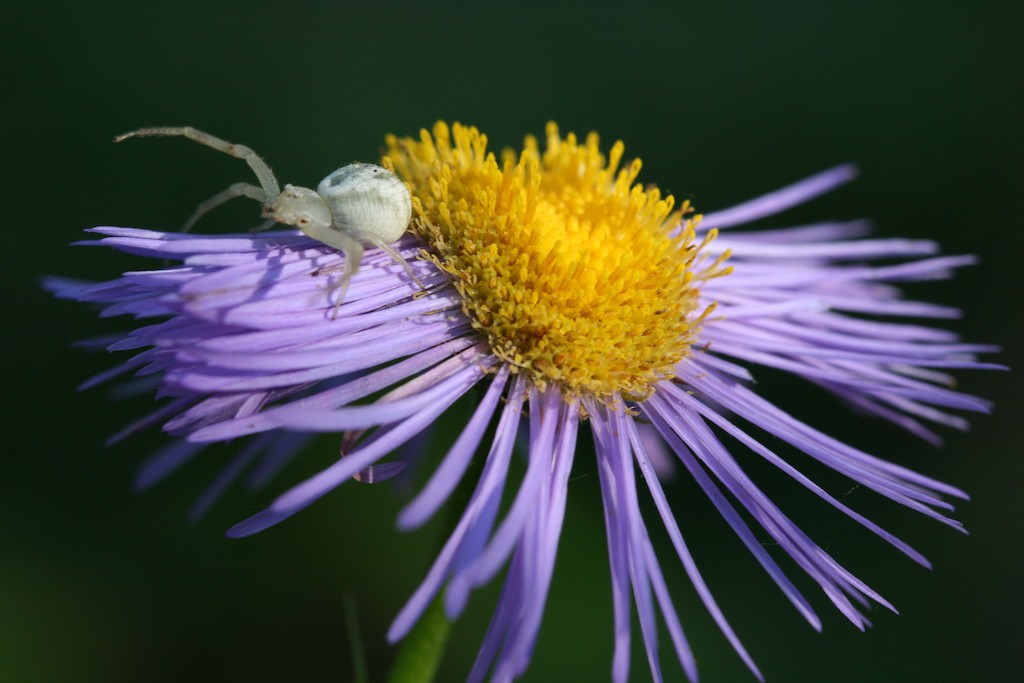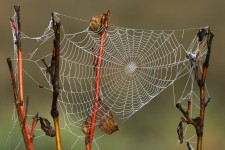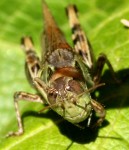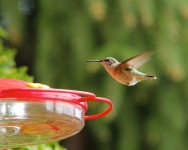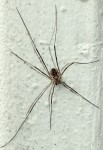Stopping to smell a wildflower–particularly a yellow or white one–may bring you eye-to-eye with a crab spider. Perched motionless with legs outstretched like a miniature crab, the crab spider waits for the unsuspecting insect while being incredibly camouflaged.
Movement on the flower reveals the location of the generally white or yellow crab spider. Those that spend their time on flowers are often referred to as “flower spiders”. True to its name, the crab spider is more skilled at moving sideways and backwards than forwards.
With the two front pairs of legs longer than the back legs, crab spiders move about on their back legs. The specialized front legs quickly grab prey that visits the flower for nectar or pollen, such as honeybees, moths and flies.
Crab spiders can catch insects two to three times larger than themselves, such as butterflies, because their toxic venom quickly paralyzes prey.
After a crab spider pounces on its prey, it injects the paralyzing venom through its hollow fangs (the venom is harmless to humans). Their fangs are small compared to other spiders. Once the prey is subdued by the venom, the crab spider vomits digestive juice into the prey so the digestive enzymes liquify the insides.
Crab spiders do not have teeth like vertebrates and cannot eat their prey. Instead, they drink the liquified insides of the prey through their chelicerae (jaws) and leave the exoskeleton of the insect relatively intact.
Successful predation relies of the quick reflexes of their strong front legs, toxic poison, camouflage from prey and predators, and their eyes.
Not only does being camouflage with the flower they are waiting on help crab spiders catch prey but it also keeps them from being eaten by birds.
The goldenrod crab spider has the ability to change its color from yellow to white over the course of three days. The spider is aware of the flower’s background color by being sensitive to the reflected light. If it moves from a yellow flower to a white flower, the spider will reabsorb the yellow pigment, sequester it or excrete it to turn white. When moving from a white flower to a yellow flower, the spider will mobilize the sequestered yellow pigment or synthesize new pigment.
Insects are not a steady food source and crab spiders can survive for months without food because of their low rate of metabolism. Females are known to turn on males after mating and eat them. However, females don’t consume their offspring if they live long enough to see them hatch.
In cold climates, the adults typically die in the winter and the eggs persist through winter. A female protects her eggs by folding a leaf over the eggs and wrapping silk around them.
Spiderlings look like miniature adults. As the spiderlings grow they shed their skin until adult-sized.
All spiders spin silk and wrapping eggs in silk is one way crab spiders use their silk. Like other spiders, they use silk as drop lines to quickly drop out of harms way. They don’t build webs but instead ambush prey.
Crab spiders can successfully ambush prey because their eight eyes create sharp images at short distances and they can see in all directions. By being able to perceive motion up to eight inches away, they are sure to get a good look at you when you stop to smell the flower they are perched on.

